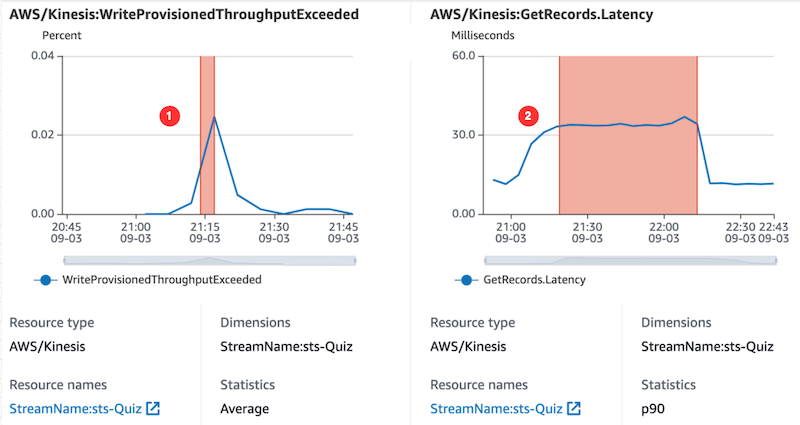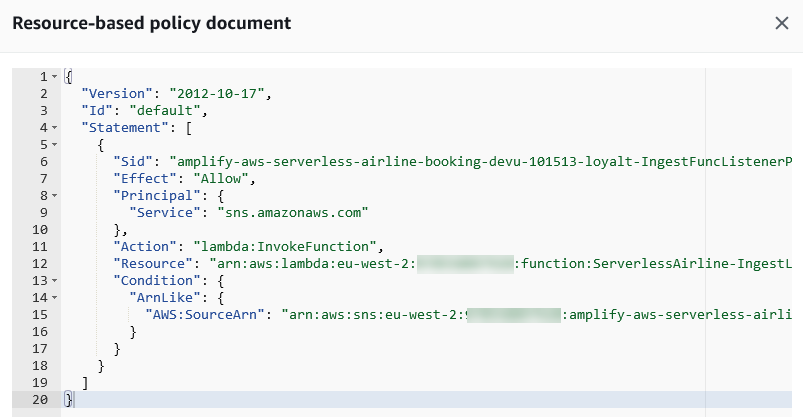AWS Compute Blog
Category: Amazon CloudWatch
Creating computing quotas on AWS Outposts rack with EC2 Capacity Reservations sharing
This post is written by Yi-Kang Wang, Senior Hybrid Specialist SA. AWS Outposts rack is a fully managed service that delivers the same AWS infrastructure, AWS services, APIs, and tools to virtually any on-premises datacenter or co-location space for a truly consistent hybrid experience. AWS Outposts rack is ideal for workloads that require low latency […]
Building a serverless multi-player game that scales: Part 3
This post discusses how to perform a load test on a serverless workload. The process was used to validate a scale of Simple Trivia Service, a single- and multi-player game built using a serverless-first architecture on AWS.
Monitoring and tuning federated GraphQL performance on AWS Lambda
There are multiple factors to consider when tuning a federated GQL system. You must be aware of trade-offs when deciding on factors like the runtime environment of Lambda functions. An extensive testing strategy can help you scale systems and narrow down issues quickly. Well-defined testing can also keep pipelines clean of false-positive blockages.
Building well-architected serverless applications: Optimizing application costs
This series of blog posts uses the AWS Well-Architected Tool with the Serverless Lens to help customers build and operate applications using best practices. In each post, I address the serverless-specific questions identified by the Serverless Lens along with the recommended best practices. See the introduction post for a table of contents and explanation of the example application. COST 1. How […]
Building well-architected serverless applications: Optimizing application performance – part 1
This series of blog posts uses the AWS Well-Architected Tool with the Serverless Lens to help customers build and operate applications using best practices. In each post, I address the serverless-specific questions identified by the Serverless Lens along with the recommended best practices. See the introduction post for a table of contents and explanation of the example application. PERF 1. Optimizing […]
Building well-architected serverless applications: Building in resiliency – part 2
This series of blog posts uses the AWS Well-Architected Tool with the Serverless Lens to help customers build and operate applications using best practices. In each post, I address the serverless-specific questions identified by the Serverless Lens along with the recommended best practices. See the introduction post for a table of contents and explanation of the example application. Reliability question REL2: […]
Monitoring and troubleshooting serverless data analytics applications
In this post, I show how the existing settings in the Alleycat application are not sufficient for handling the expected amount of traffic. I walk through the metrics visualizations for Kinesis Data Streams, Lambda, and DynamoDB to find which quotas should be increased.
Building well-architected serverless applications: Managing application security boundaries – part 1
This series of blog posts uses the AWS Well-Architected Tool with the Serverless Lens to help customers build and operate applications using best practices. In each post, I address the serverless-specific questions identified by the Serverless Lens along with the recommended best practices. See the introduction post for a table of contents and explanation of the example application. Security question SEC2: […]
Exploring serverless patterns for Amazon DynamoDB
Amazon DynamoDB is a fully managed, serverless NoSQL database. In this post, you learn about the different DynamoDB patterns used in serverless applications, and use the recently launched Serverless Patterns Collection to configure DynamoDB as an event source for AWS Lambda. Benefits of using DynamoDB as a serverless developer DynamoDB is a serverless service that automatically […]
Monitoring memory usage in Amazon Lightsail instance
This post is written by Sebastian Lee, Solution Architect, Startup Singapore. Amazon Lightsail is a great starting point for those looking to get started on AWS. Lightsail is ideal for startups, SMBs, and hobbyist developers because it simplifies the deployment of instances, databases, load-balancers, CDNs, and even containers. However, you cannot track metrics beyond CPU […]









